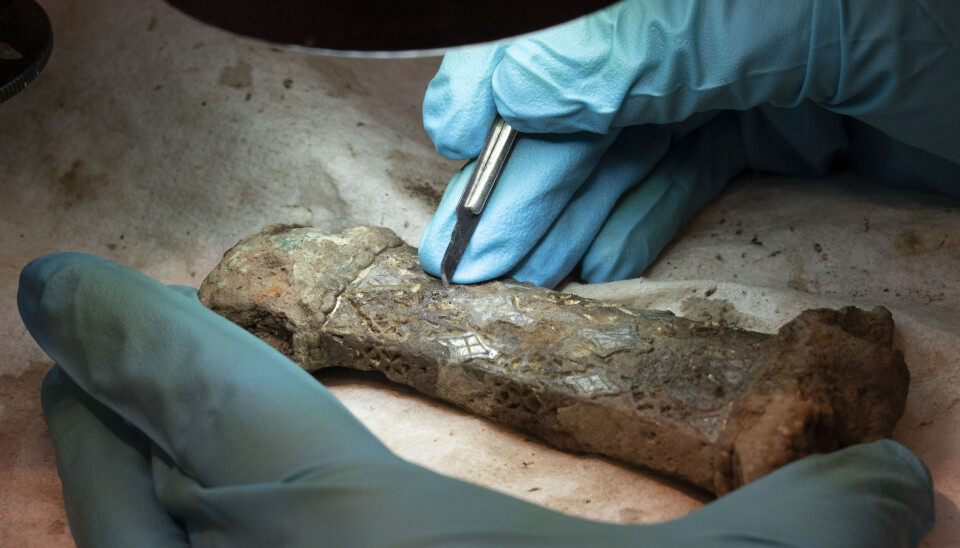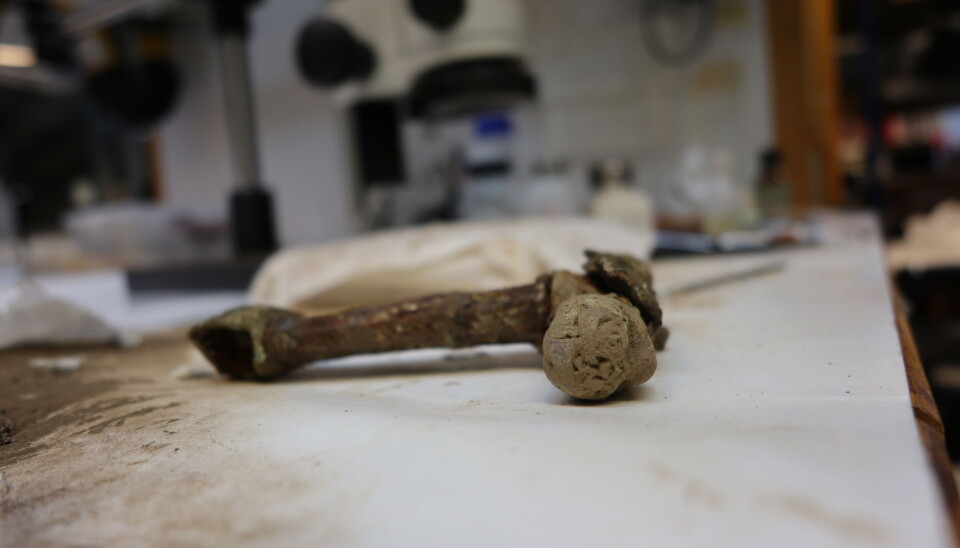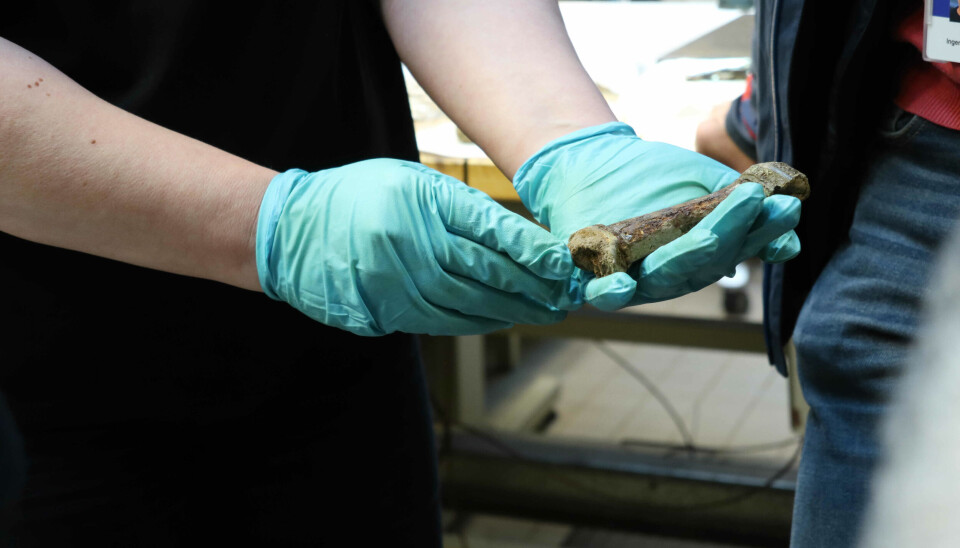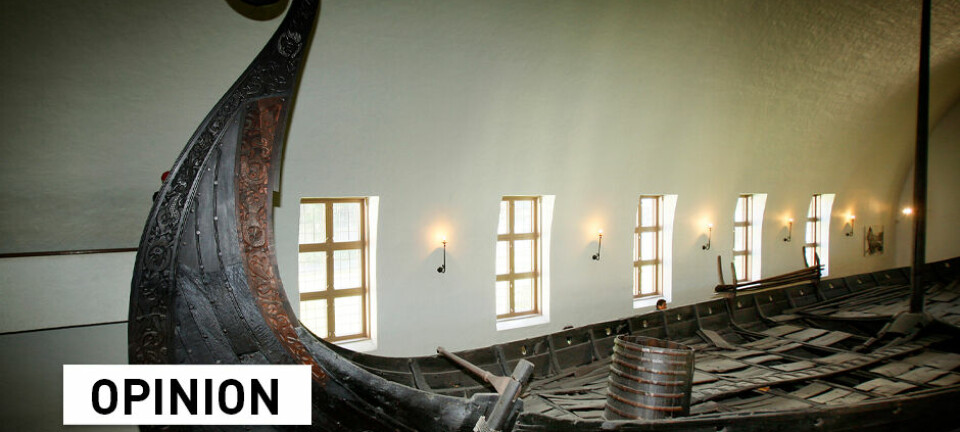
Unique sword from the Viking Age found in Stavanger
Metal detector enthusiasts in Norway have found a unique type of Viking Age sword with spectacular ornamentation.
The story actually started last year, when a small part of a sword was found on a farm in Gausel in Stavanger on the West coast of Norway. The so called Gausel queen was once buried here. Her grave, which is considered to be one of the richest women’s graves from the Viking Age, was found in 1883.
Last year then, somebody who was searching in the area with a metal detector found a small piece of a sword.
This spring, another metal detector enthusiast found a large piece of a sword.
And lo and behold – the two pieces not only fit together – they are parts of what would have been one of the most spectacularly ornamented and heaviest types of swords from the Viking Age.
The blade is missing, but the hilt has unique details in gold and silver, and exquisite details not previously known, the University of Stavanger write in a press release (link in Norwegian).
Only about 20 such swords have been found in Norway – out of a total of around 3000 Viking sword finds.
Lavish and complicated decor
It is still difficult to see the details in the hilt, but the décor includes gilded elements of the typical animal styles found during the Iron and Viking Age, from ca 550-1050, according to the press release. The hilt also contains geometrical figures in silver, made with the so-called niello technique. This means that a metallic mixture of sorts was used to make black stripes in the silver.
Both ends of the crossguard are formed as animal heads.
“The technique is of a very high quality, and both the lavish and complicated decor and the special formation of the crossguard make this a truly unique find,” archaeologist Zanette Glørstad from the Museum of Archaeology, University of Stavanger, says in the press release.
“This will likely attract quite a bit of attention from other parts of Europe as well,” the Viking Age expert believes.

Most likely imported
This particular type of sword has been found in both Eastern and Western Europe. The around 20 swords of this type that have been found in Norway were most likely imported.
Glørstad still believes that the sword could have been made in Norway.
“We can imagine that copies of these types of swords were made by very competent sword smiths in Norway,” she says.
Still:
“The décor suggests that the sword was made in France or England, and that it can be dated to the early 800s. The closest parallel we know of is a sword from the Island Eigg in Scotland, which was found in a grave from the 800s”, Glørstad says.
- RELATED: Why do we love the Vikings so much?

Norway and the British Isles
The area in which the sword was found, Jåttå-Gausel in Stavanger, is as mentioned known for its important finds from the Viking Age.
Just as the women buried in the Oseberg ship, the Gausel queen had taken a lot of rich artefacts from the British Iles with her in her grave.
“This find means that we have to take a new look at the entire Jåttå-Gausel area,” says Håkon Reiersen, researcher at the Museum of Archaeology in Stavanger.
“The outstanding collection of imported spectacular finds connected to both men and women from the area show us that this has been an important hub for the contact across the North Sea,” he says.
Both metal detector enthusiasts immediately turned in their finds to Cultural heritage management. This ensured that the Archaeology museum could take care of the two parts, and start their work on the conservation as well as a reconstruction.

































